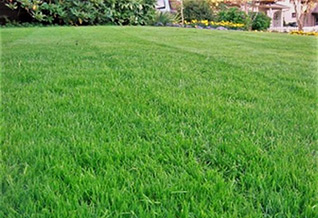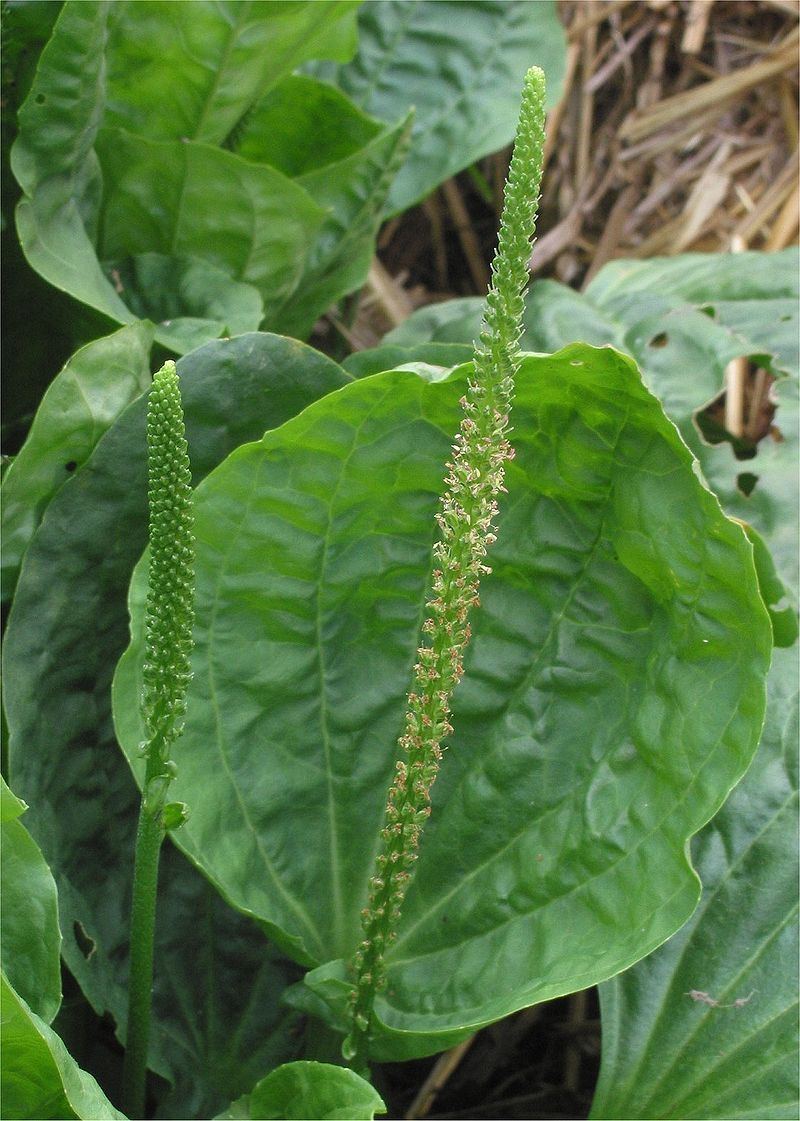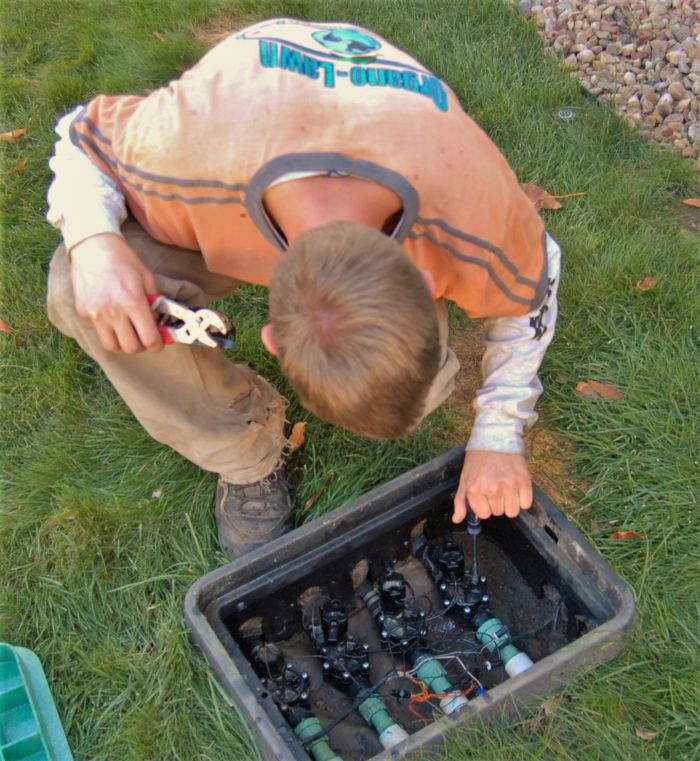Grubs are one of the most damaging insects in Colorado. You can find different types of grubs around the state. A relatively new species to Colorado, the Japanese beetle, are most prevalent in the Front Range; including Denver and the surrounding areas. A grub is the immature stage of a scarab beetle.Grubs are most commonly found in turf-based areas, which makes them damaging to lawns.
Grubs in Colorado have a yearlong lifecycle before they become a scarab beetle.
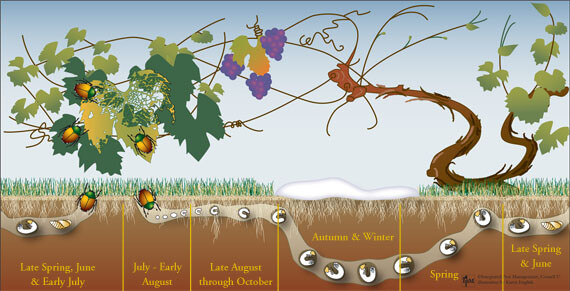
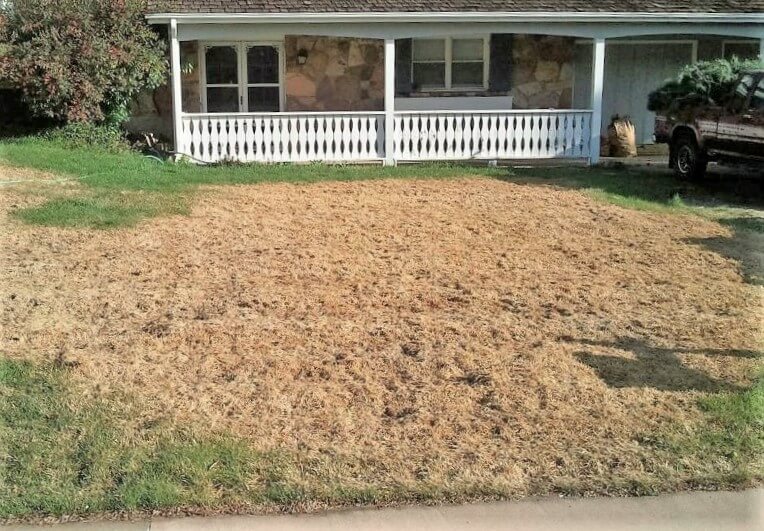
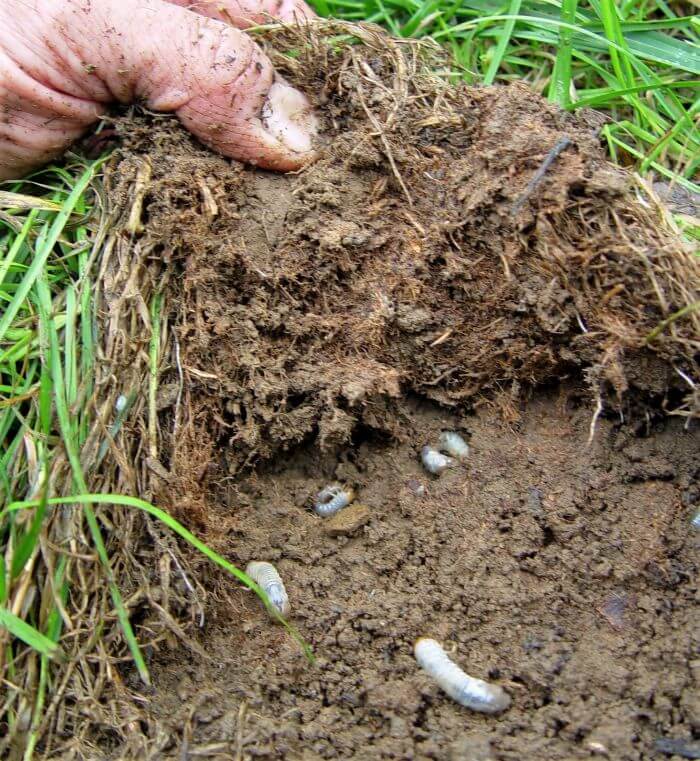

Life Cycle of a Grub
In Spring adult beetles emerge from the earth and begin looking for food and mates. They feed off of leaves, fruits, and trees; they can fly up to a mile away from where they emerged. In July the females spend about 2 to 3 weeks laying dozens of eggs in the soil. The eggs tend to hatch in about 2 weeks depending on the moisture and health of the soil. Grubs begin to molt into different stages of larvae and quickly consume large amounts of grass roots. On rare occasions they may even feed on tree roots depending on the species. This is when you will begin to see the damage they are causing; when the grass no longer has a root system it dies. During the winter grubs dig deeper and stay below the frost line. Once spring comes they feed again and then go into a pupae or cocoon like stage before emerging as an adult scarab beetle. The cycle then repeats.
What kind of damage do grubs cause?
After they eat the root system of grasses the lawn will begin to die in those areas. You’ll notice by the straw like color of the grass. Most people assume this means they need to water more, which in turn creates a happy environment for grubs allowing them to hang around and eat more. Grubs can also attract other critters such as skunks and raccoons, which hunt for grubs by digging into the soil. As the grass dies rabbits and mice feed on it causing more damage with their feces.It creates a feeding cycle.
How do you know if you have grubs?
The best way to tell if you have grubs is to grab the dead grass in a handful and see if it pulls up like a toupee. If the root system no longer exists it will have nothing to hold onto allowing it to come up easily.You may even see some grubs lying underneath.
How do you prevent this from happening?
First and foremost, make sure you’re watering practices are deep and infrequent. Watering that promotes deep root growth is key to a successful lawn. Following our 1-2-3-2-1 watering method is a sure way to set up your lawn for success. If the damage is severe you may need a top-seeding package to fill in your dead spots.Knowing what to look for and where to go for help is the key to preventing further infestation. For more information regarding grubs in Colorado click here.

